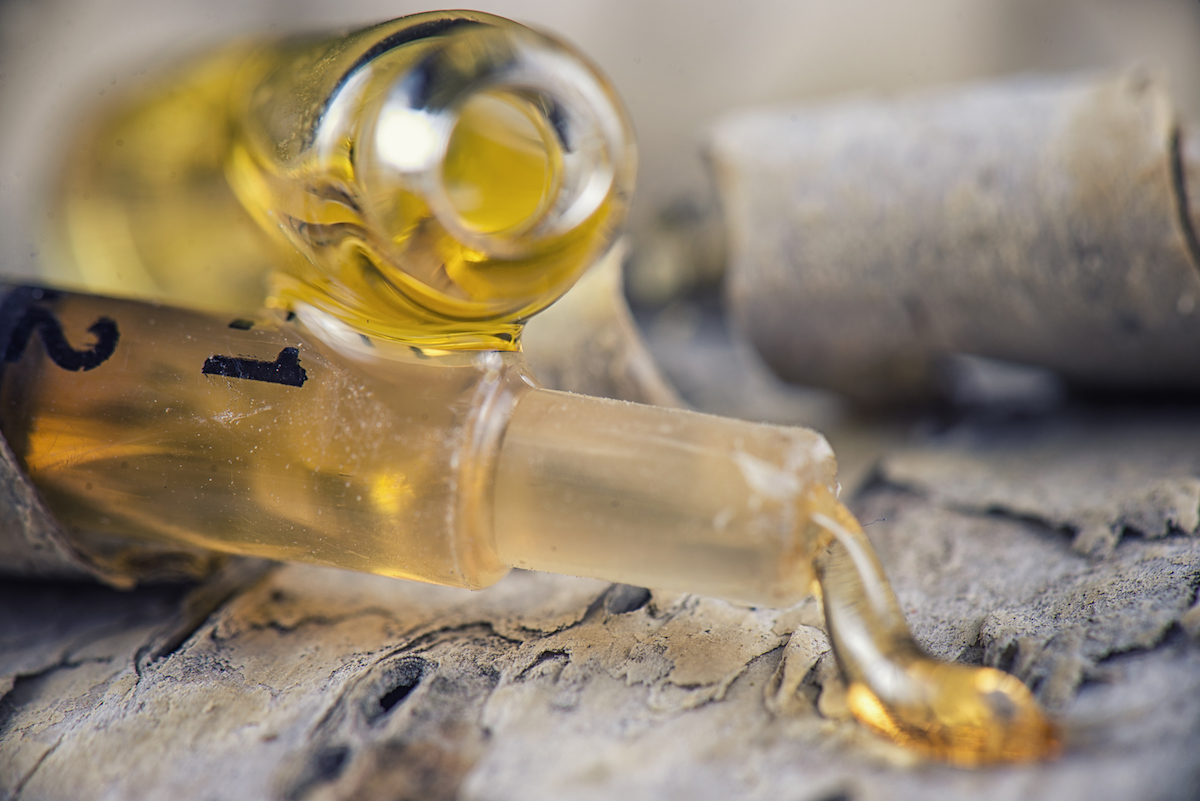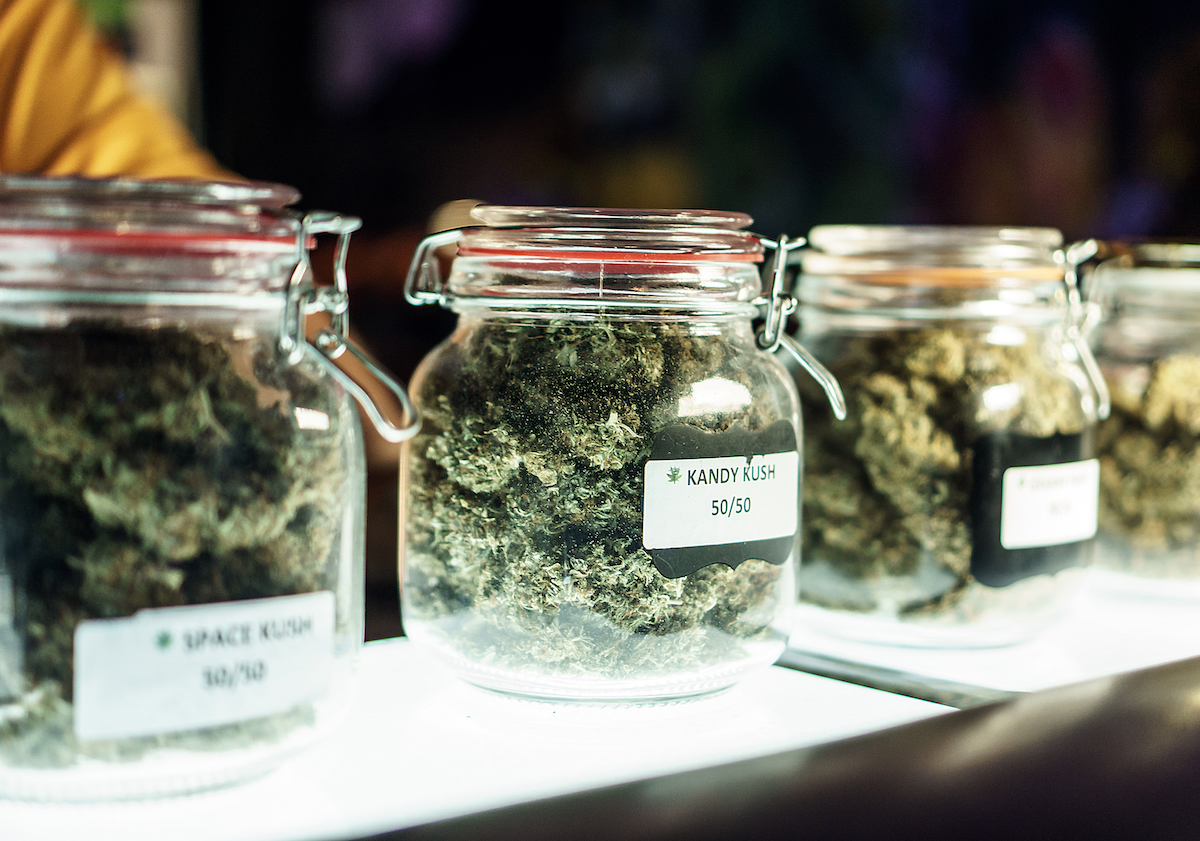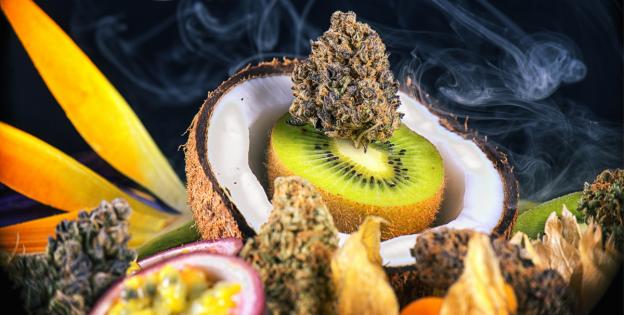- Terpenes are extremely volatile compounds, and it is precisely their chemical instability that contributes to the release of their distinctive aromas and flavours.
- However, this also means that terpenes can be lost in most known cannabinoid extraction processes.
- The cannabis industry has recently focused on the search for new terpene isolation methods, in the hope for a future full of new medical and recreational benefits for marijuana consumers.

Terpenes are found in aromatic plants like pine and rosemary, and over 100 of them have been identified in cannabis. They are responsible for the aroma and flavour of the different marijuana strains, and have long been used in the manufacturing of unique fragrances within the perfume industry. But nowadays terpenes are in the spotlight for their potential therapeutic properties.
Many terpenes are known to have beneficial effects on human health, including anti-inflammatory, anti-cancer and bronchodilating. Using terpene isolation and extraction methods, scientists can design new lines of treatment free from synthetic pharmaceuticals.
Terpene isolation can also be advantageous for many other industries such as concentrate processing. At present, it is possible to produce high-cannabinoid concentrates, but their aroma tends to be mild due to the cleansing processes that terpenes are subjected to. Terpene isolation and extraction methods could help reincorporate aroma and flavour into the concentrate to create customised profiles as desired by the manufacturer.
In the fast-growing cannabis world, terpenes are the next new craze. Cannabis users now regard terpene concentration as a good indicator of the general quality of the cannabis production and harvest processes.
How can terpenes be extracted and isolated?
In comparison with other extracts like resin or oil, terpenes are delicate and require extreme care so that their aroma and flavour is preserved. Hence, conventional cannabinoid extraction methods can be damaging for these compounds, thus reducing the overall quality of the final product.
So how to eliminate impurities like fats, chlorophyll, and other plant metabolites without damaging terpenes? In reality, there is no perfect way to extract terpenes from organic sources. As in most processes, the choice is determined by a cost-benefit analysis. Another issue is time: the longer the process, the less effective it will be for commercial purposes, and the more impurities will end up in the final product.

Nowadays there is a wide range of terpene isolation technologies. These are grouped into two main categories: solvent-based and solventless extracts.
- Solventless extracts
Solventless extracts are produced using heat and pressure, following a procedure that has already been used in the perfume and essential oil industries for hundreds of years. The two main methods under this category are steam distillation and hydrodistillation.
Steam distillation is carried out by placing the plant matter, or marijuana, over a container of boiling water. As the steam passes through the plant material, the lighter oils that contain terpenes are carried to a condensation flask, where water and oils cool down and liquefy. Lighter oils float on the water's surface and can be easily collected. Hydrodistillation is a similar process, apart from the fact that the plant material is placed directly in the boiling water.
A solvent-based extraction is a chemical process in which compounds are separated owing to their difference in solubility.
As solventless extractions do not use solvents, there is no danger of diluting the extract with external chemical residue. However, steam distillation requires a significant amount of sustained heat, and this can lead to alterations or even destruction of many plant compounds such as terpenes.
- Solvent-based extracts
Solvent-based methods offer better performance. They are carried out at lower boiling points using gases like butane, ethanol, nitrogen or CO2. Vacuums are used to reduce the initial heat in order to prevent degradation of the bioactive compounds.
One of the techniques most commonly used is CO2 extraction. CO2 extraction uses heat and pressure to turn gaseous CO2 into a supercritical fluid, which acts as a solvent for the plant matter. CO2 runs through the plant material, producing a resin concentrate that requires refining in a vacuum drying oven, in order to isolate terpenes and extract them separately. This ensures purity as there are no remaining traces of solvent or water. As CO2 is non-flammable, this process is safe and effective, exempt from all the quality issues that arise from steam distillation.
The cannabis industry is going nuts over terpenes
Terpene isolation techniques and methodologies have become widely available in the last few years thanks to their previous development in the perfume sector. The continuous evolution of the cannabinoid extraction industry has also been a key factor in the development of new products and applications derived from cannabis terpene isolation. That is why terpene profiles have been the superstars at the latest cannabis fairs, conquering the palates of users and investors alike, and offering an opportunity for new products from specific cannabis strains with very precise aromatic profiles.

Nowadays the market already offers lots of isolated terpene profiles that users choose to boost cannabis aroma and flavour. The buds from the so-called 'cannabis light', for instance, have little aroma, but this issue can be easily solved with the addition of terpenes. With only one drop, smoking becomes a much improved experience.
Terpenes are also shaking up the vaporisation sector as, when added to the renowned 'e-liquids', they render a much more real experience. The food industry is also open to the world of terpene profiles, with several brands already making use of them in the production of honey, oil, jam, beer, and even marijuana-flavoured crisps.
Terpenes are believed to play an integral part in the therapeutic effect of cannabis, as they interact with cannabinoids in what is known as the 'entourage effect'. This means that future research could focus on studying those genetics that are more effective for specific health disorders, and what terpenes they all have in common, so that customised profiles could be created for specific patients.
There is no doubt that these products have entered the market firmly, foreboding future significant transformations in the fast-growing cannabis industry.






Comments from our readers
There are no comments yet. Would you like to be the first?
Leave a comment!Did you like this post?
Your opinion about our seeds is very important to us and can help other users a lot (your email address won't be made public).